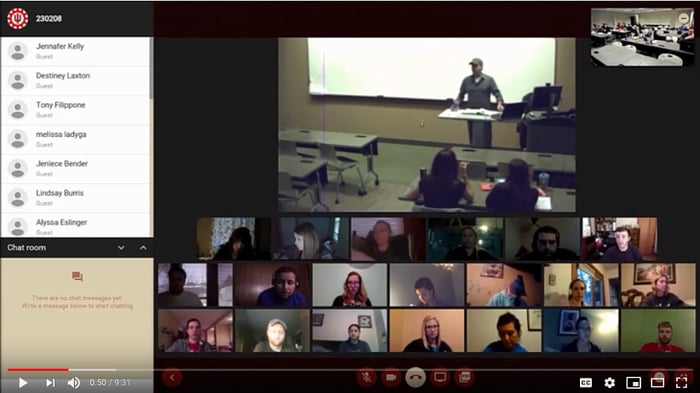Video conferencing has made a huge impact on the way we do business and interact with people across the globe. But it also holds tremendous impact for the education sector. Video is changing how - and where - students learn, offering opportunities for remote education in spite of geographic borders and income barriers. It is also a viable alternative to in-person classes in response to natural disasters and health crises, and can provide continuity for both teachers and students.
Open New Doors for Students with Video
Advances in video conferencing technologies allow people to come together, face-to-face, on virtually any device or network. By eliminating the need for expensive video conferencing codecs, modern video collaboration platforms can make learning more accessible for students everywhere.
Classrooms can use online video education to bring students and instructors together in real time, encouraging collaboration and increasing engagement. Video collaboration extends teaching beyond the limits of traditional classrooms. Students can gain access to—and connect with—educators, lecturers, and industry experts from anywhere in the world.
Learn how Indiana University used video to support a blended learning approach
Video collaboration has the power to dissolve barriers and transform how teachers—and students—view the classroom. Students can take virtual field trips to places their classes may not have the time or budget to visit or cannot physically go, such as outer space. Not only can students cross physical borders on virtual field trips, but they can travel in time—virtually—to experience different eras in history.
Students in rural areas can gain access to potentially higher-quality urban schools. And students who are ill and house-bound or in the hospital can attend classes to prevent falling behind. Teachers can also save recordings of lessons for absent students and for students to refer to if they have questions. Teachers open to exploring the possibilities of video collaboration will find them virtually endless.
Indiana University lecturer Harry Vasilopoulos leads a class with both in-person and remote student attendees
Teach Lessons of Global Importance
Video has the ability to broaden the learning experience and, ultimately, increase student engagement and productivity.
Video collaboration in education can help shape a better tomorrow with lessons that transcend traditional book learning of facts and equations. Video tools can help create virtual pen pals, where students connect with each other across classrooms, schools, and even countries. Students can collaborate with other children across the world, building intercultural understanding and a strong global identity. This collaboration helps expand students’ worldviews and knowledge of other cultures. Video conferencing can teach tolerance, acceptance, and encourage new thinking–lessons that will last a lifetime, can be learned from anywhere, and applied regularly in everyday life.
Video collaboration expands horizons in the classroom in innumerable ways. As schools and teachers discover and develop creative lesson plans that incorporate video, students across the globe reap the benefits. Modern video technology is becoming more accessible and more useful for classrooms, opening the doors for endless potential to improve the learning experience.
Read one student's perspective on using video for online classes here.
After 12 years of running technology companies, Daniel Newman traded the corner office for a chance to drive the discussion on how the digital economy is going to forever change how business is done. Daniel is a Forbes, Entrepreneur and Huffington Post contributor and a published author of "The Millennial CEO" and "The New Rules of Customer Engagement."






